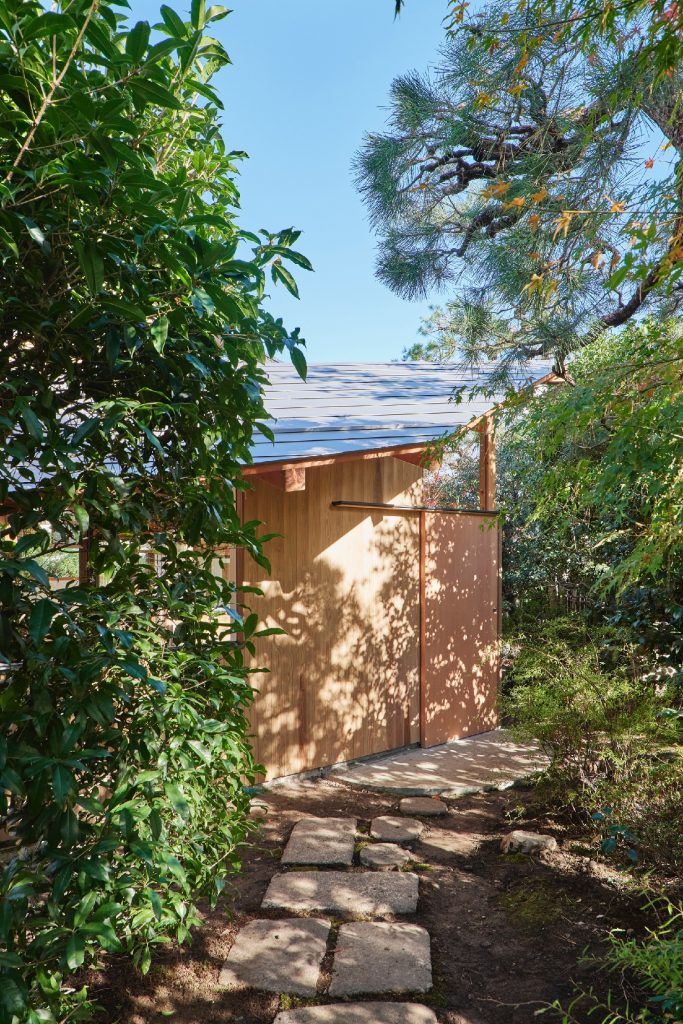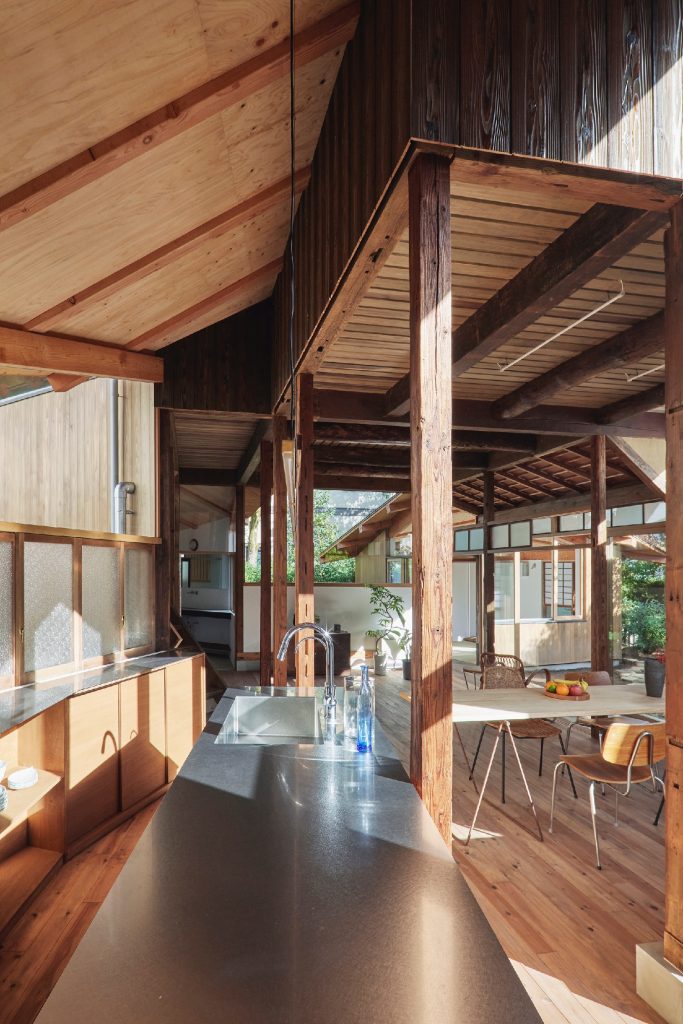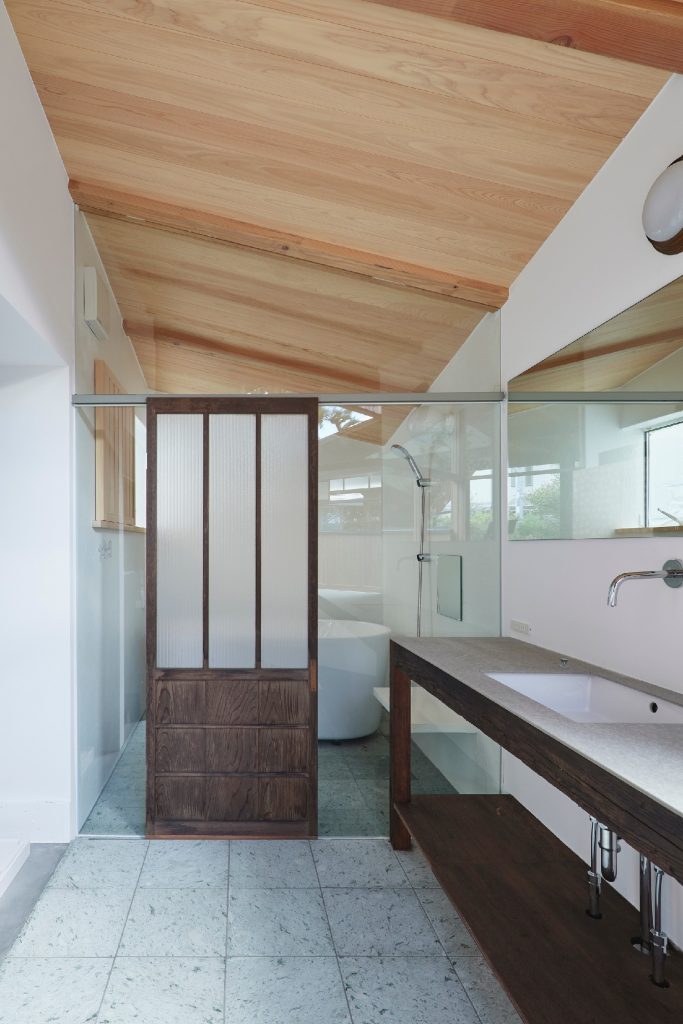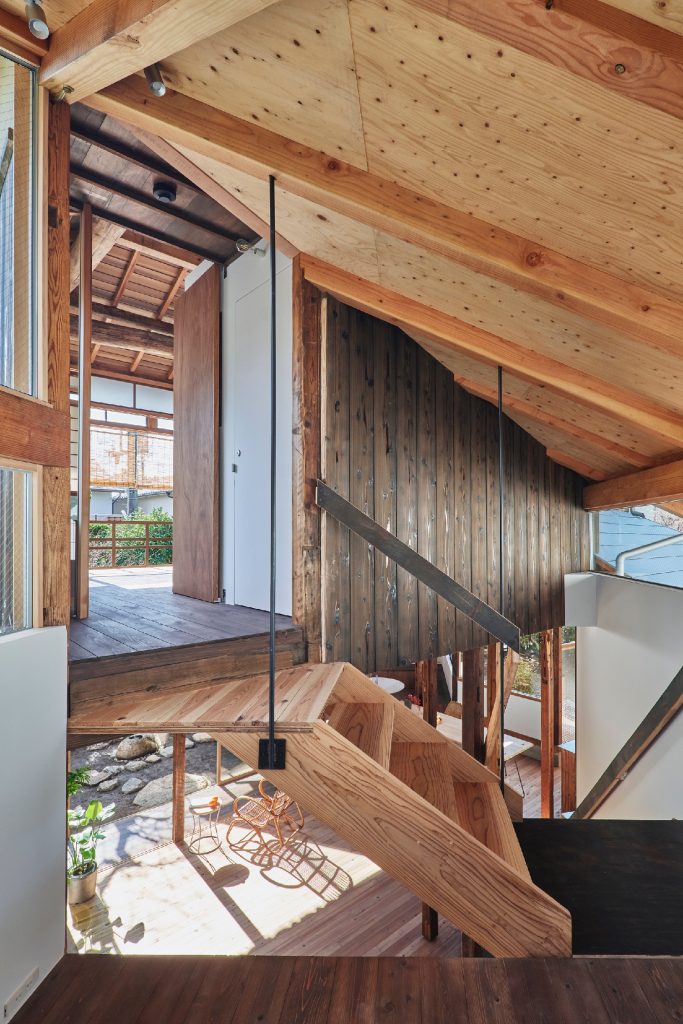椎葉邸

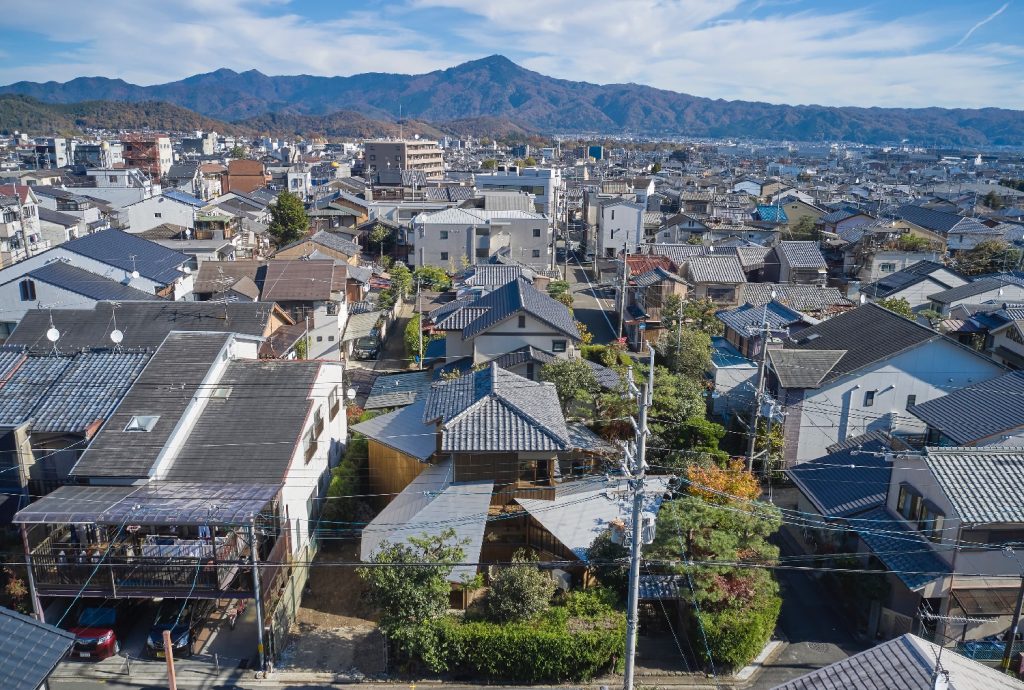
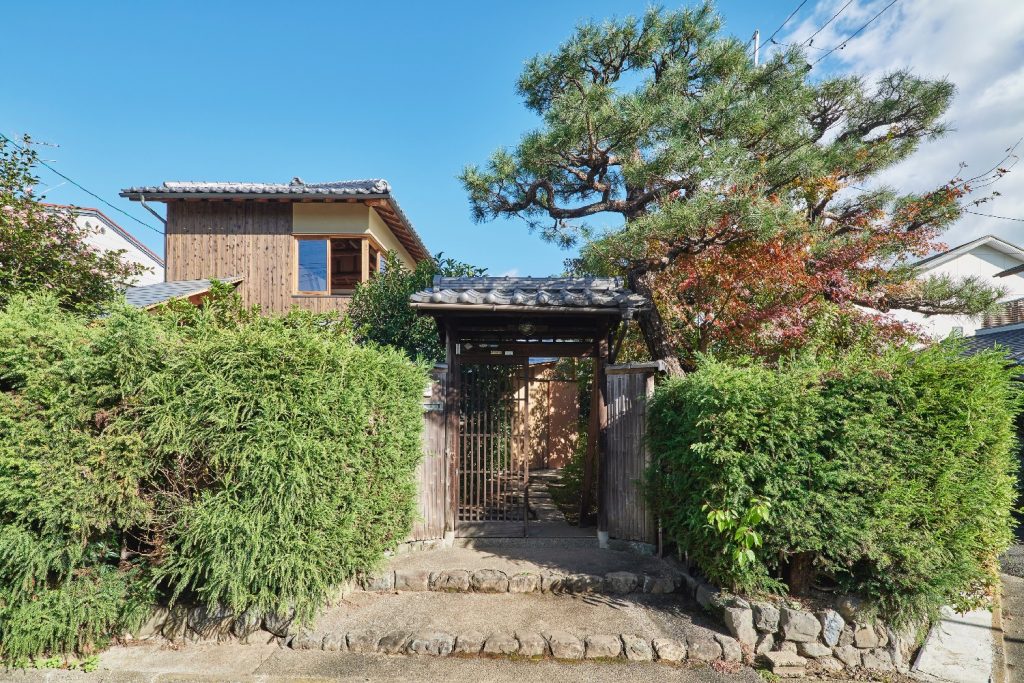
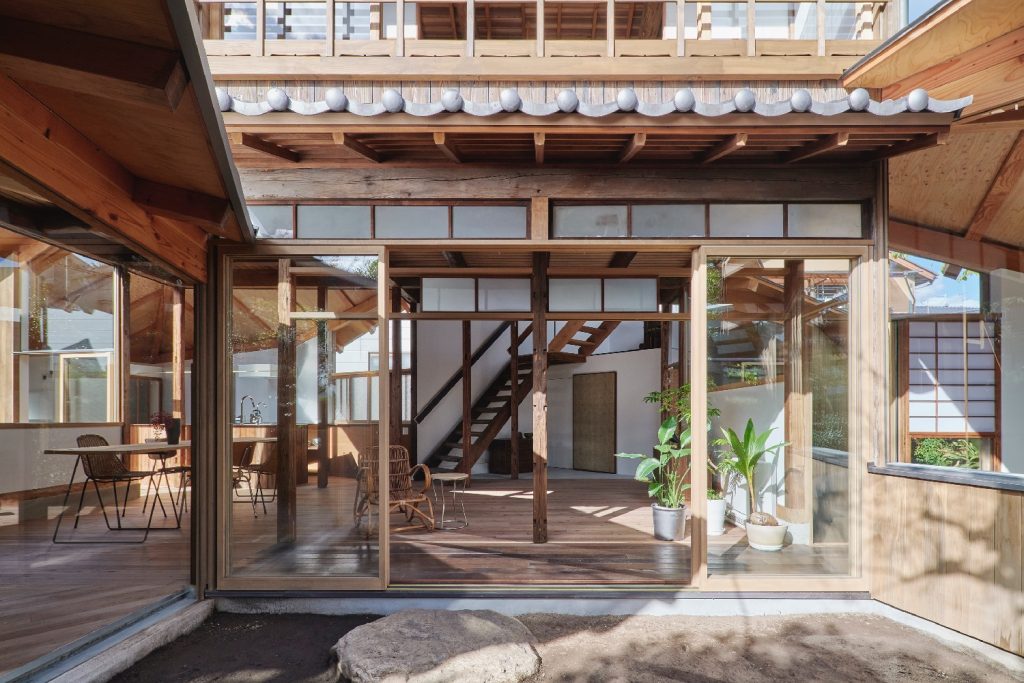
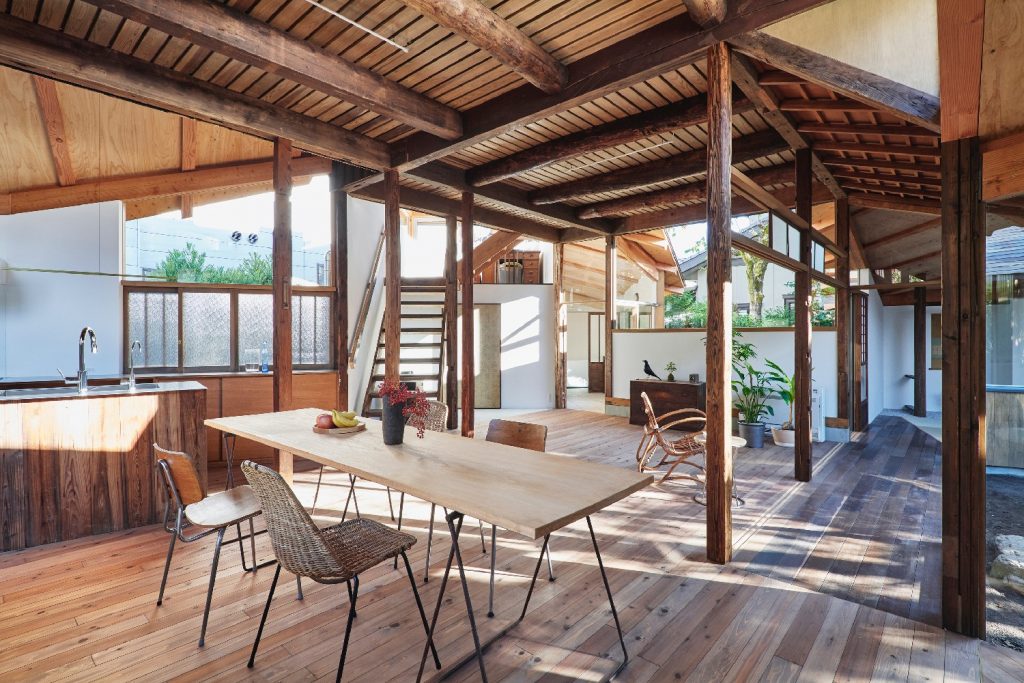
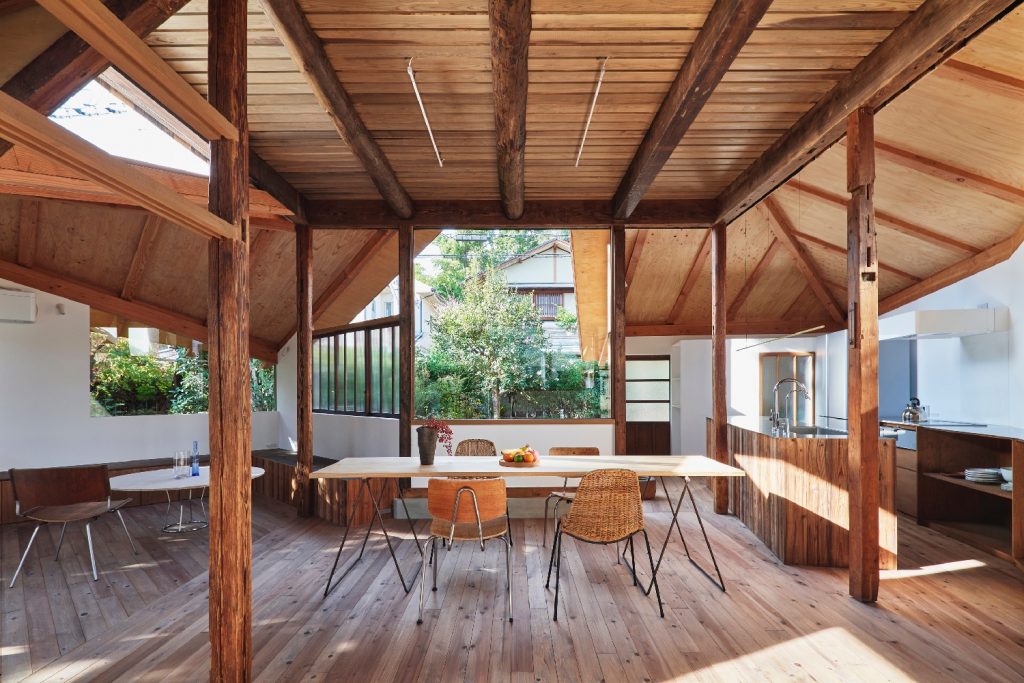
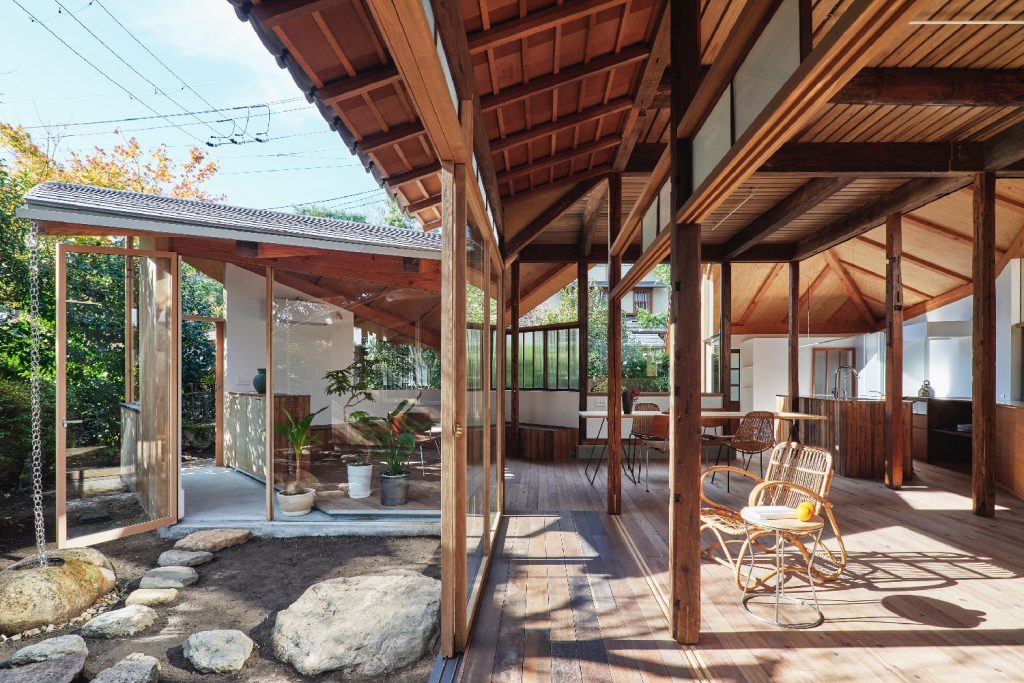
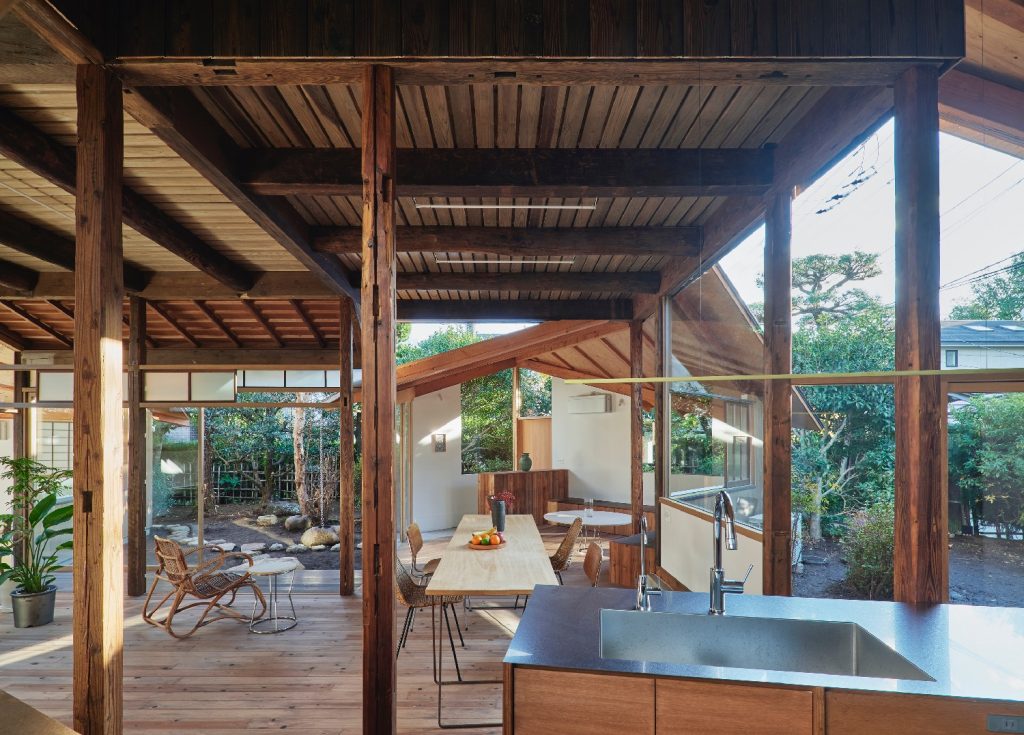
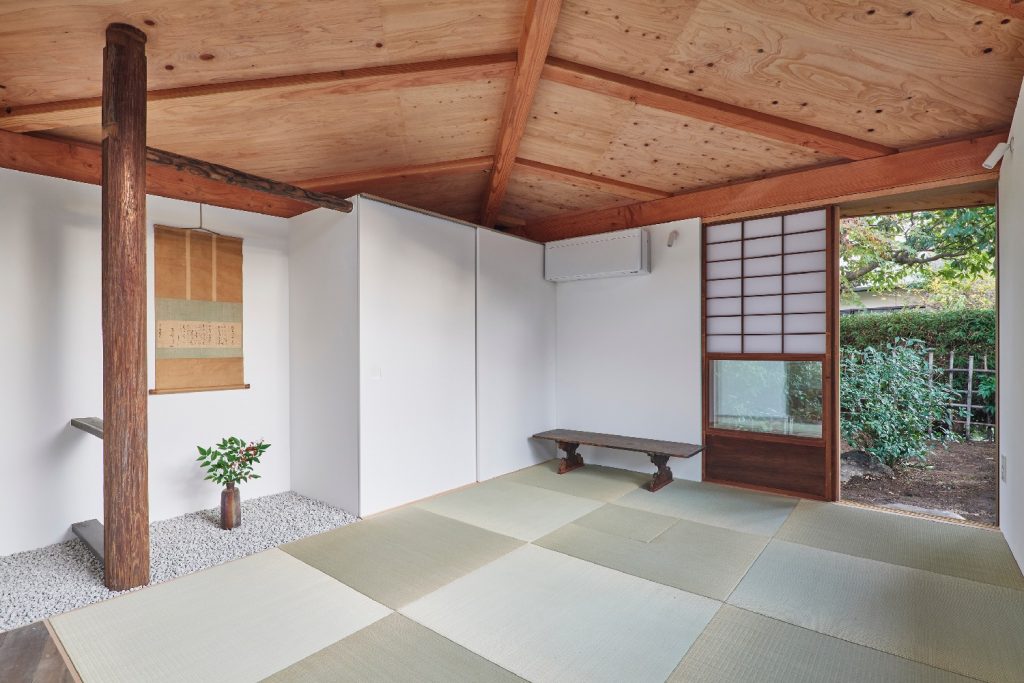
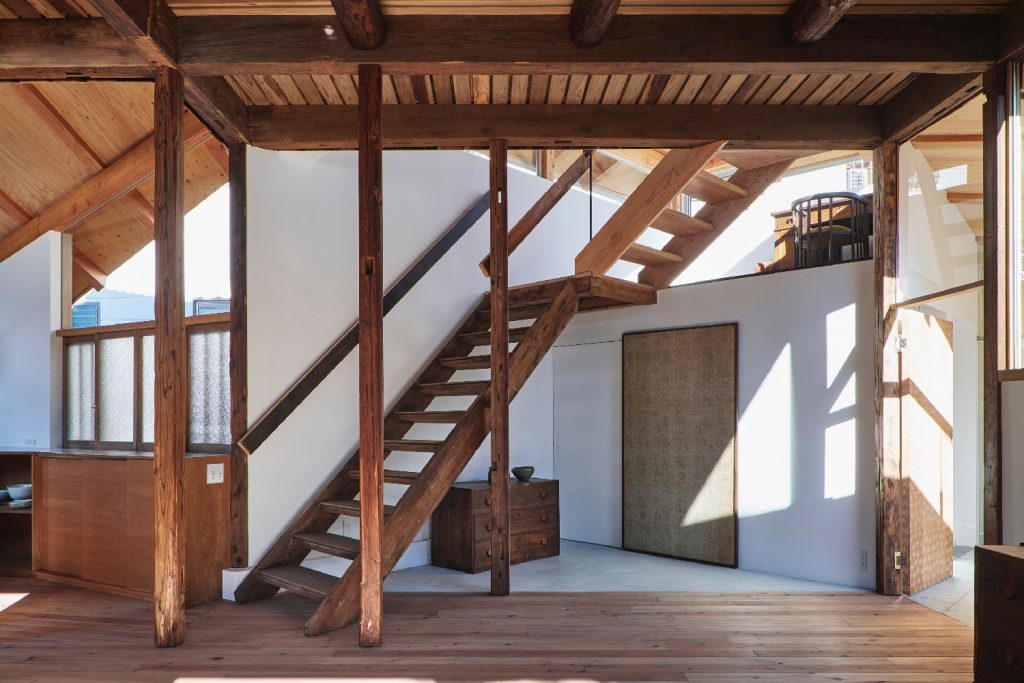
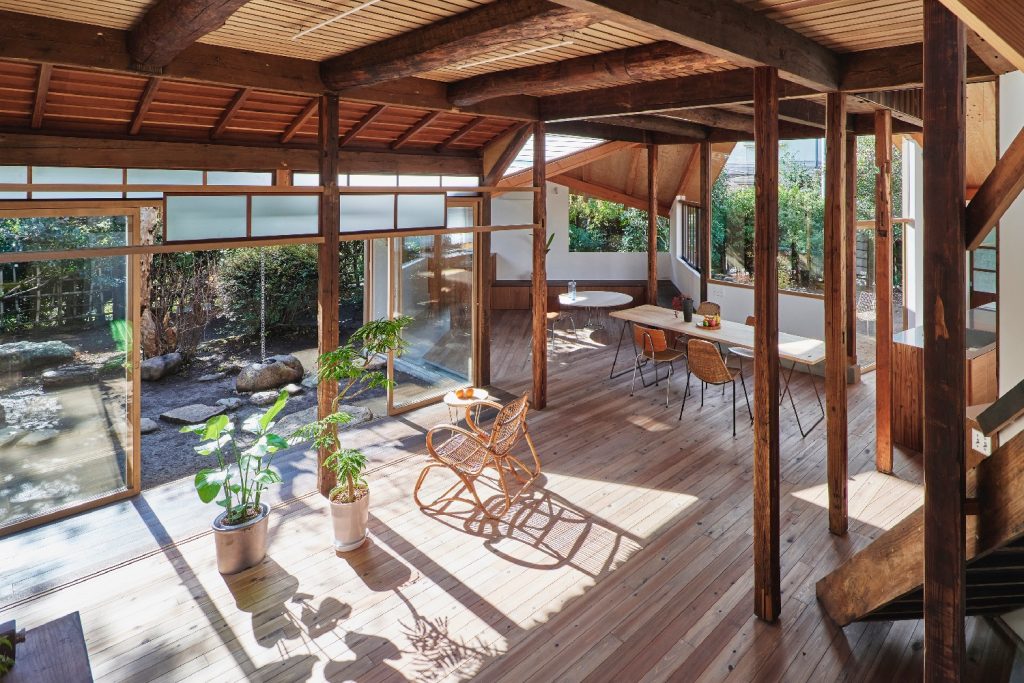
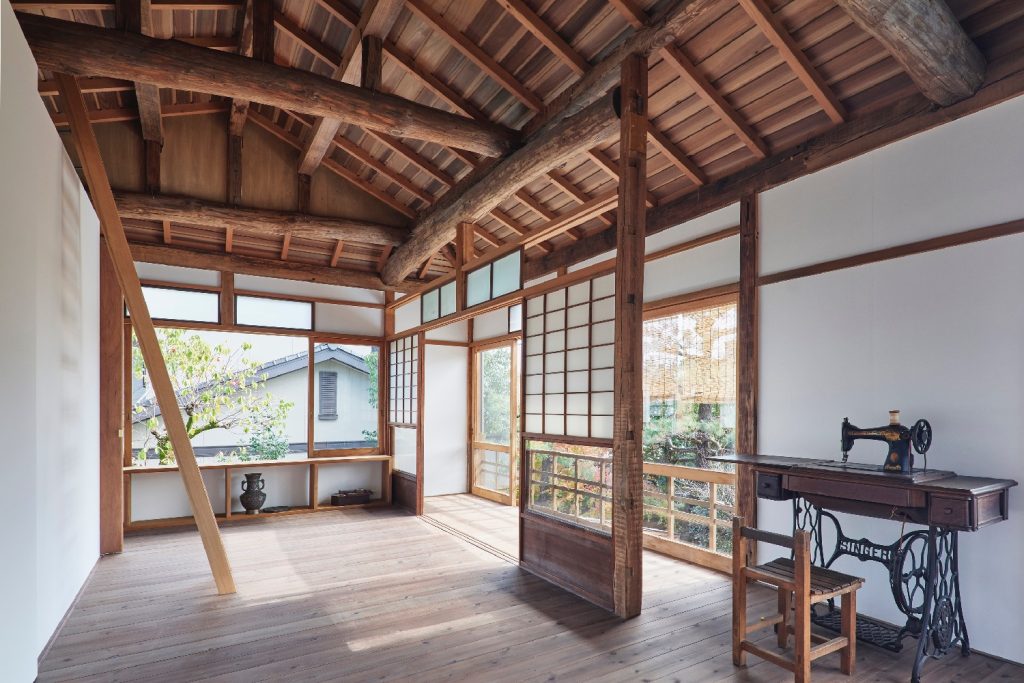
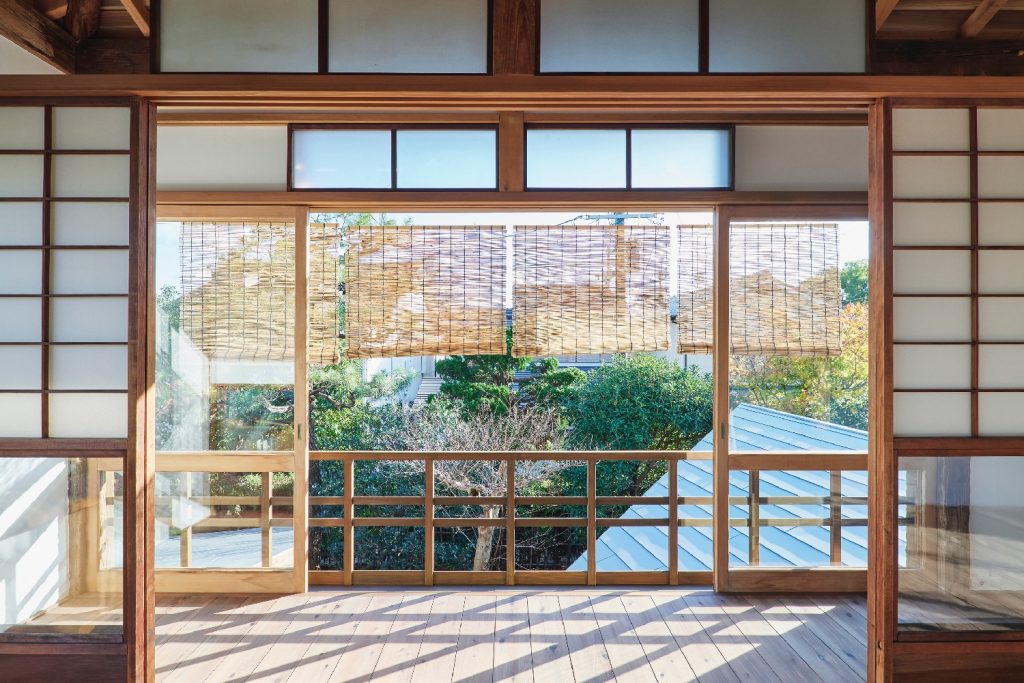
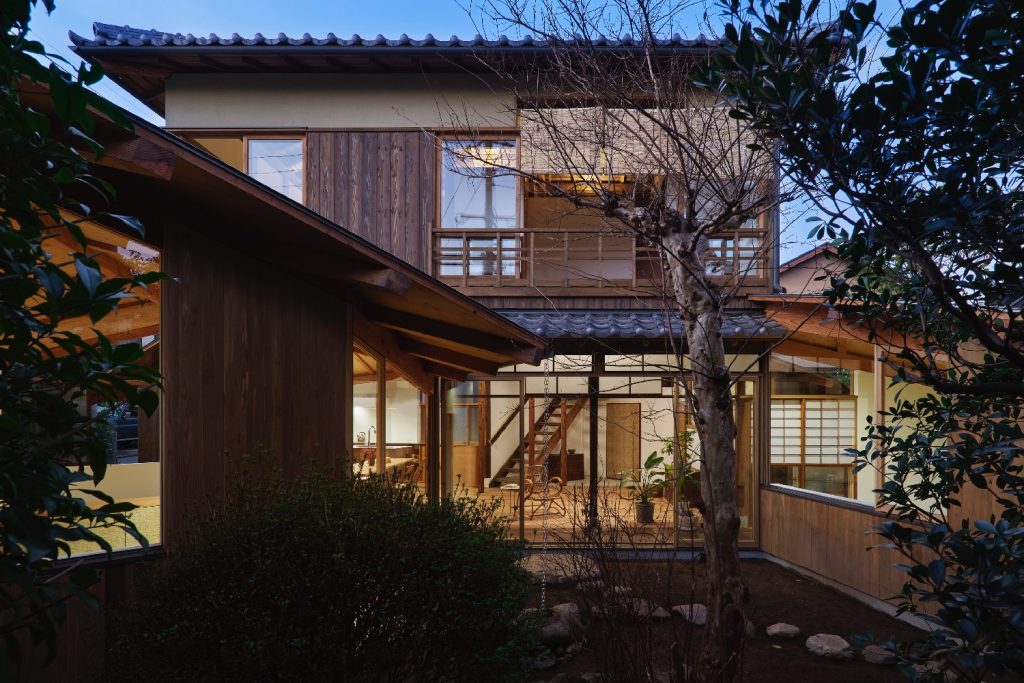
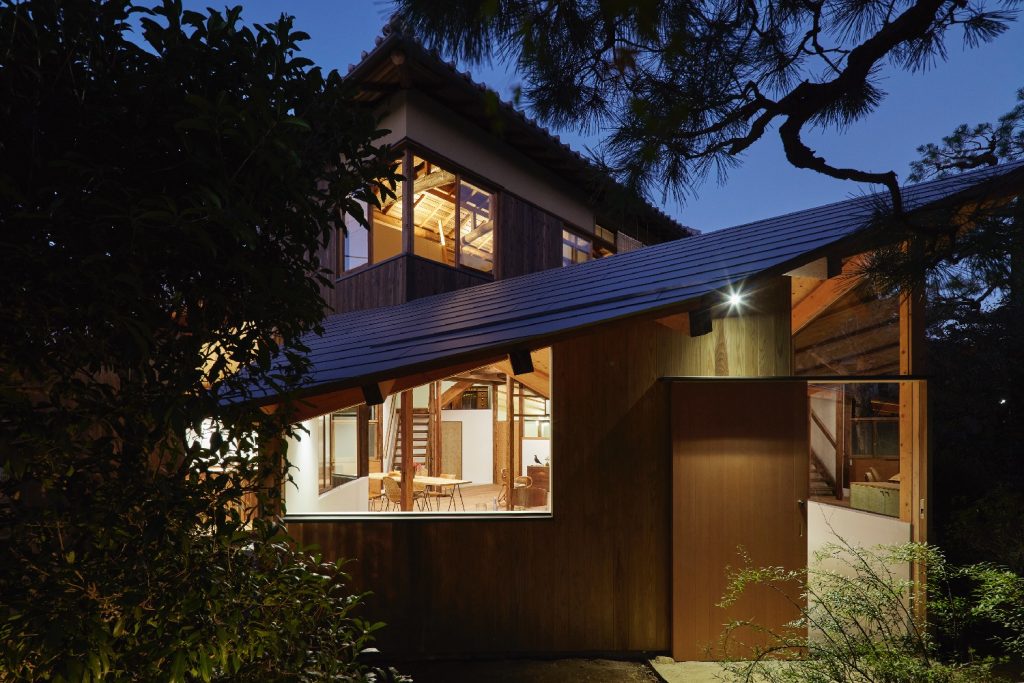
photo : yasuhirotakagi
古い家が纏う公共性
京都で代々住み継がれてきた築100年ほどの住宅の改修計画である。敷地には年月をかけて手入れされてきた豊かな庭があり、中央には可愛らしい2階建ての日本家屋が建っていた。家というのは個人の所有物であるが、長い時間この場所に建ち続けてきたことで、さまざまな人間の中で生きていて、どれだけ開放的につくられた家よりも開かれた不思議な公共性のようなものを獲得していた。街の中で愛されてきたこの環境を残しながら、新しい暮らしをつくることを目指した。
新しい繋がりを生み出す構造
定年後の夫婦ふたりの住まいだが、人の集まる家にしたいということであった。もともとの家は生活の変化に合わせて下屋が増改築されていたので、中心にある2階建ての既存母屋だけを残し、5つの木造の下屋を増築することにした。それぞれの下屋は庭の環境に合わせてつくる。金木犀に囲まれた居間、陽の光の入る天井の高い台所、モミジの隣に離れのように配置される茶室、光が降ってくる階段室と星空の見える書斎、柔らかい光の入る風呂。この5つの下屋は、古い母屋と庭を繋ぐ接点となると同時に、既存母屋をフライングバットレスのように支える新しい構造体でもあり、既存母屋の1階は耐震壁から解放されることになる。付加的な形式の下屋増築が、建築全体に新しい開放性を作り出すような構造形式である。
敷地全体に散らばるイメージの断片
全体は既存母屋/新しい下屋/古い庭という構成ではあるが、その構成を溶かしていくような小さな操作を重ねた。既存と新築の境界を横断するように、古い階段、昔の縁側、家具を配置する。さらに新築部には、古い建具、床柱、照明など既存の素材を転用し、新しく生まれた庭には既存庭石や庭木を植えていく。庭も建築も家具も等価に扱いながら、がらんどうとなった母屋を中心に敷地全体に展開する環境の断片を再編集し、幾重にも重なったレイヤーを家中に張り巡らせていく。たとえば「既存の門から入った新築の下屋にある昔の子供部屋の木製建具越しに新しい庭を眺めた先に昔のツツジの木がある」というような関係である。そうすることでさまざまな人がこの家に対してもっていたイメージに対する接点が生まれ、新しい「開かれた家」が生まれると信じている。
A Sense of Publicness Embodied by an Old House
The project is a renovation of a house in Kyoto originally built around a hundred years ago, inherited and lived in from generation to generation. The site consisted of a rich garden that had been maintained over the years, with a little two-story Japanese style house situated in the center. The house is a private property, yet since it stood in this place for a long time it had essentially become a part of various people’s lives, thus acquiring somewhat of a curious air of publicness that was more open and welcoming than any house with an open design. The aim was to create a new lifestyle while preserving this environment that has been cherished by the city and its neighborhood.
A Structure that Generates New Connections
The residence is for a retired couple, yet what the clients desired was a house where people could gather. Since the lean-to extensions of the original house had been added and renovated to accommodate changes in lifestyle, the decision was made to newly construct five wooden lean-to spaces, leaving only the two-story main house in the center. Each lean-to is constructed in correspondence to the garden’s environment. A living room surrounded by osmanthus trees, a kitchen with a high ceiling where sunlight enters, a tea room positioned like an annex next to the Japanese maples, a bright staircase filled with light and study with a view of the starry sky, a bathroom permeated by soft rays of light –these five lean-to spaces, while serving as interfaces connecting the old main house with the garden, are also new structures that support the existing main house like flying butresses. As a result, the first floor of the existing main house is relieved from the need for seismic resistant walls. The lean-to extensions that per se would be considered but an additional element, is in itself a structural format that creates a new sense of openness throughout the entire building.
Fragments of Impressions Scatterd Throughout the Site
While the entire structure consists of the main house / new lean-to spaces / and the old garden, a variety of subtle schemes were set in place so as to dissolve this structure. The old staircase, old porch, and furniture are arranged in ways that traverse the boundaries between the existing and new constructed areas. In addition, existing materials such as old fittings, alcove posts, and lighting are used in the new constructed areas, and existing garden stones and trees are planted in the newly created garden. While treating the garden, architecture, and furniture as of equal importance, the fragments of the environment that unfold across the entire site centered on the spacious main house are re-edited, and further curated into multiple overlapping layers that can be observed throughout. For example, a relationship whereby, “an old azalea tree stands beyond the new garden seen through the wooden fittings of the old children’s room that has been installed in the new lean-to space that one arrives at when entering through the existing gate.” In doing so, I believe that new points of contact will be generated in response to the impressions that various people had towards this house, thus giving rise to a new kind of “open house.”
Shiiba House
Location :Kyoto Japan
Principle use : residence
Design : Motosuke Mandai / Masashi Itaya (Mandai Architects)
Structure Engineering : Kenichi Inoue Structural Engineers
Construction : Amuza Koumuten Co.,LTD.
Total Floor area : 131.95 sq.m
Site area : 357.73 sq.m
Structure : Wood
Completion : 2021.12

